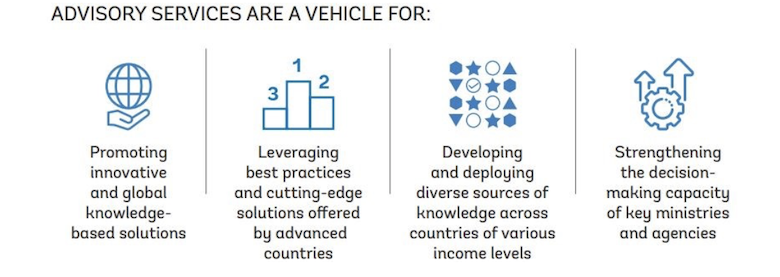The Government of Kuwait and the World Bank have a longstanding partnership built around an increasingly strategic Advisory Services Program that started in the early 1960s. One of the first reports delivered in 1961 focused on the state of the Kuwaiti Economy.
The opening of the World Bank’s Country Office in 2009 expanded the program with the aim of improving socio-economic conditions, including human development, private sector development and governance. The Government has defined a clear path for sustainable growth with the Vision 2035/ New Kuwait that is aimed at transforming the country into a financial and commercial hub for the region by 2035.
The seven pillars of the Vision will be realized through the Third Kuwait National Development Plan (KNDP-3) 2020-2025 and subsequent national development plans. The Government seeks to continue the strong partnership with the World Bank in implementing KNDP-3. The World Bank provides value as a generator and connector of development knowledge, through its ability to build the capacity of ministries and agencies, through its convening power, and through its principles of cooperation and partnership.
The partnership between the World Bank and Kuwait is anchored in a selective and knowledge-focused program. This program is intended to provide the country with cutting edge knowledge on best practices for development in areas in which the World Bank has a clear — and at times, unique — comparative advantage.
Building on achievements and lessons learned from the previous Advisory Services Program, the World Bank and the Government of Kuwait agreed to a Country Engagement Framework (CEF) for 2021-2025 with the following thematic pillars:

The main principle guiding this partnership consists of a demand-driven, results-focused and highly-selective program that will support the development agenda of the Government and contribute to country outcomes.
It will conform to the mandate of the World Bank in fighting poverty and promoting shared prosperity in member countries across the social and economic spectrum. The CEF is also guided by a Gender Engagement Framework that will support a crosscutting approach to enhancing women’s economic opportunities, and promote an enabling environment for their employment, entrepreneurship, and leadership.
